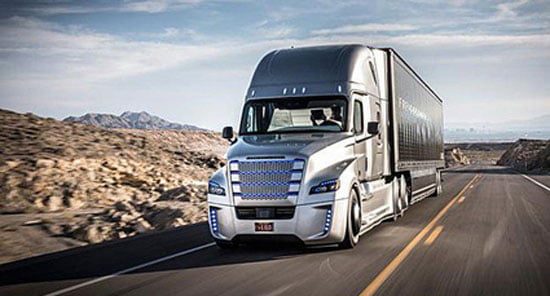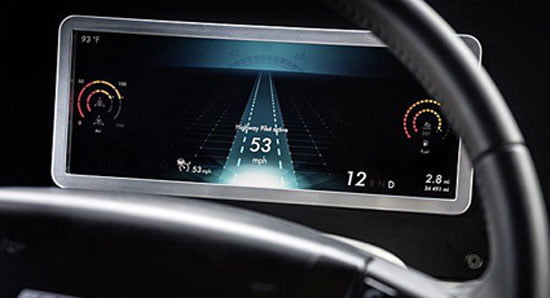
This is a fundamental function of technology: to replace living labour. To throw workers onto the street, that is, in order to keep the working class disciplined. The excerpt below is a translation of a BBC article dated 26/5, titled “driverless convoys: will drivers be replaced by software?” and is a typical example of the threat:
Drowsiness and stress are permanent hazards for the long-distance driver, and accidents are unfortunately frequent. However, a radically new unmanned truck being tested by Daimler could offer the solution. Earlier this month, the automotive giant received the first permit to test such a vehicle on the highways of Nevada.
Using a combination of GPS, radar and cameras, the Freightliner Inspiration can steer itself on open highways, freeing the driver to take a break, check emails or even watch a movie. The catch is that a qualified person (note: a “qualified person”, not necessarily a driver) must remain in the driver’s seat at all times, ready to take control if something goes wrong. In any case, the project’s supporters claim that once perfected, the technology will cut accidents by reducing human error, boost productivity and lower emissions. […]

The good news, forecasts the consultant from Roland Berger, is that the technological obstacles will be overcome within the next 10–15 years, and in all likelihood by 2030 human drivers will have been completely removed from the equation. […]
Looking even deeper into the future, what exactly will the consequences be if trucks like those from Daimler become the norm – and drivers turn into optional accessories? According to the American Trucking Association (note: this is the owners’ association, not the drivers’ union) there are 3.5 million professional truck drivers working in the USA alone, plus another 5.2 million workers employed in the transportation industry who are not drivers. That is a striking total of 8.7 million jobs tied to trucks that will face some form of extinction. […]
